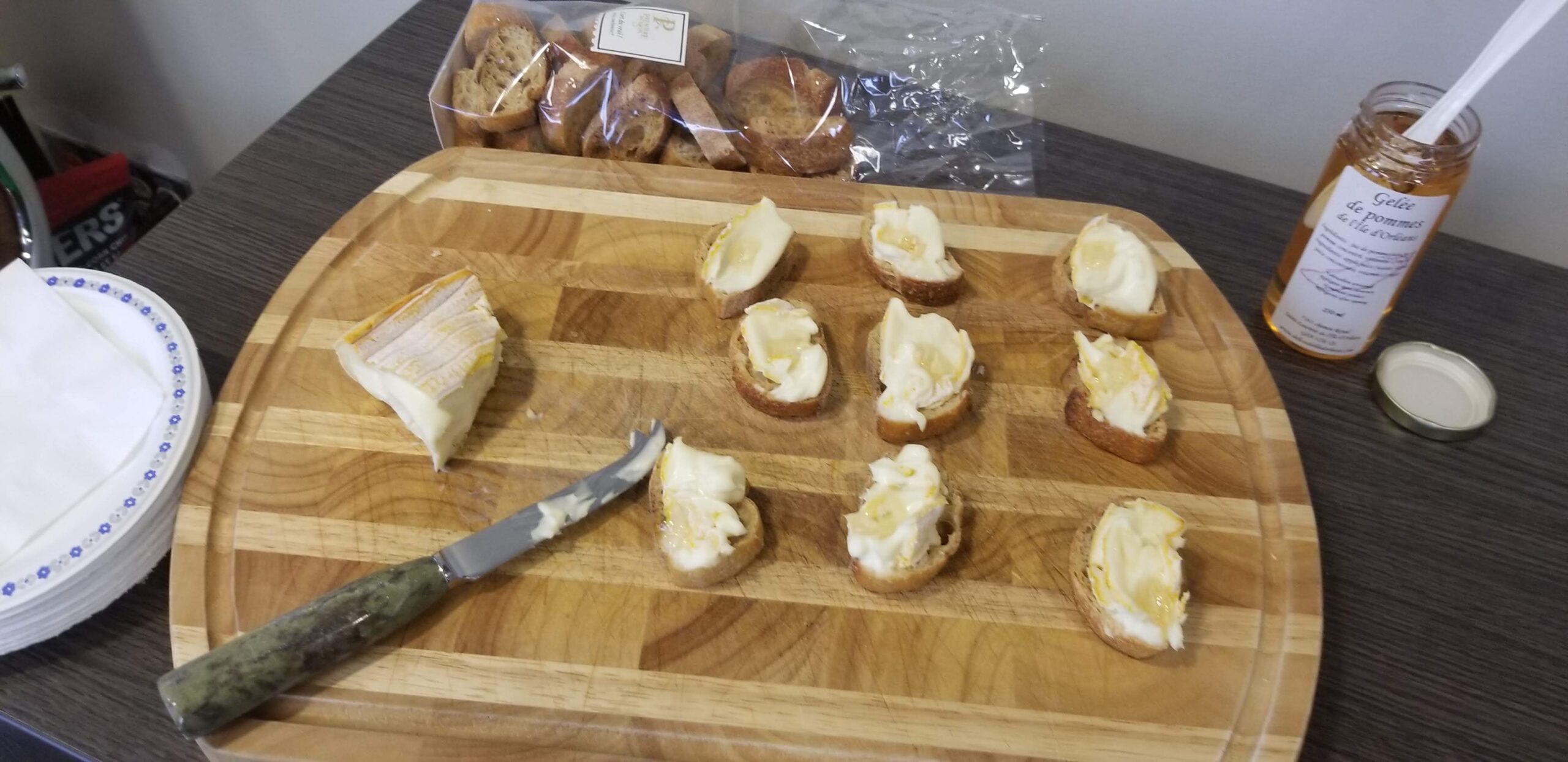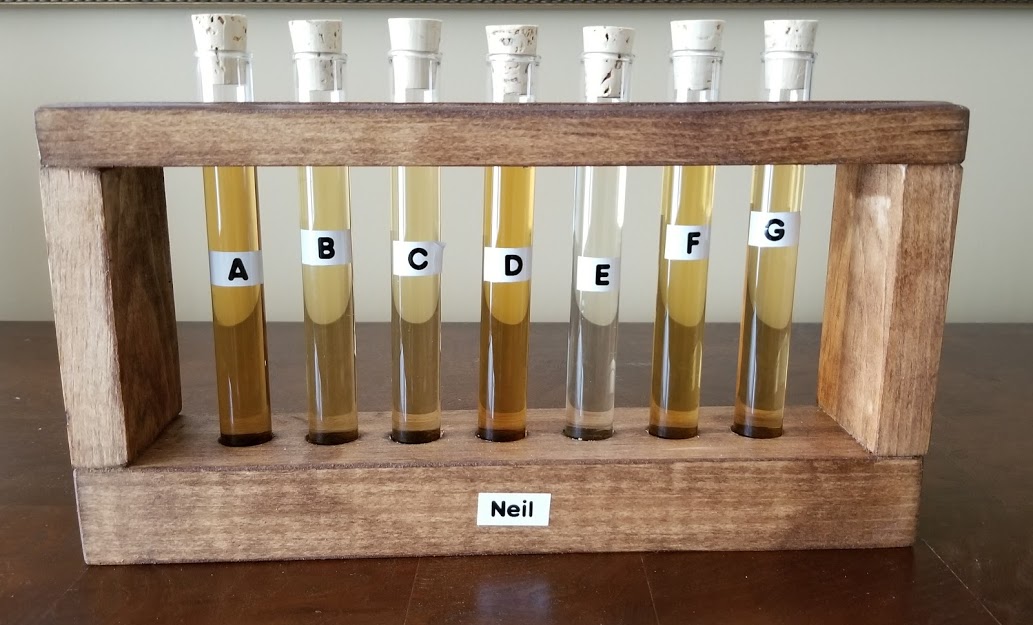How to Host or Organize a Tasting
First off, I need to be very upfront. I’m 100% self taught on tastings, I just picked this up because I wanted to share my love of Grand Marnier, and show people that Grand Marnier is not just the $30 super sweet drink that most people see on the shelves or put in their sangria. Grand Marnier actually has a full line of products, they’re just very poorly marketed, and hard to find. After that first tasting of the Grand Marnier line, people asked if I was going to do other tastings, everyone had enjoyed the tasting, so it started to become ‘a thing’. I’m not a beer or wine guy, so I’ll never do beer or wine tastings, there are enough sites and clubs specializing in those areas. I also don’t do Scotch (yet), again lots of those clubs/sites, and they’re pricey if you want to have anything decent. Like I said in the ‘about us’, I’m trying to get people to understand hard alcohol better, and hopeful raise awareness, and build an appreciation for the creativity, the quality, the workmanship, and the elegance of it all. So, before you start to organize your tasting, you have to make a few decisions.
- What are you trying to do (have a good time, do something different, or truly judge the alcohol)
- Do you want to have food pairings or not have food pairings
- Blind or Not-Blind (Not-blind is 10x easier, but blind is far more objective, if it matters)
- How many bottles?!! (You need enough for variety, but you don’t want everyone sloshed)
- What type of alcohol do you want to Taste? (I hope my site helps you with that decision)
- How do you choose the bottles, once you chose the type of alcohol (again this site should help)
- Do you charge people, or not, if you do, how much should you charge.
- Remote or not (this is due to Covid), I think everyone would want to do it together as a group.
How to Host or Organize a Tasting
If you’re just trying to do something different, or have a good time, the rules are obviously very relaxed, in fact there can be no rules, it’s up to you. If you’re truly trying to judge the alcohol, and be objective, then you definitely need some rules, but hopefully you still keep it fun.
Do you want to have food pairings or not have food pairings
I highly recommend food pairings, but it is hard if people have not tasted the alcohol. It is a way to enlist help, to have more participation during the organizing of the event, everyone can suggest different dishes. You can assign a dish per participant, some will want to make food, some will just want to pay $$, or pick up something at the store or restaurant. Some have suggested that each bring a bottle, as another way to participate, this is hard to orchestrate, in my opinion. I’ve always stayed away from that, but it’s your tasting not mine. One thing I do recommend if you do a pairing, try the alcohol first, rate the alcohol by itself, and then try the alcohol with the food, and rate them as a pair. If you only rate the alcohol paired with the food, it can end up being more about the food than the alcohol, that happened with my first tasting. Also the flavour of the food, can influence how the alcohol tastes, as well. By doing it by itself, at the start, you avoid this issue.
Food makes it a more social event, and nicely spaces out the time between shots/ tastings. If it`s just a spirit tastings with no food pairings, then you might end up with people drinking quite a bit, without enough space between the tastings, and although the party might get very animated, it might not be animated in a good way.

Blind or Not-Blind
I started off with my tastings being “not-blind”, it`s easier, but I`ll tell you, you`re not doing an objective tasting at all, IMHO. People will tend to judge by the bottle, and/or by the price if they know it. I think there are easy ways to make it a blind tasting. You can set-up some glasses, at each station, with the bottle hidden. Obviously you would have to have pre-pour the glasses in that case. My tastings are presently remote, due to Covid, the blind part of it, was kind of easy, and was a natural extension of the process, since I had to figure out a way to dole out the liquor. It became an obvious question, “why not make it blind as well”. A disadvantage to doing the tasting blind, is you can`t explain the bottle before each individual bottle tasting, you have to explain all the bottles before the entire tasting, and then when people are tasting the different liquors, they are unaware obviously which one they`re tasting. Sometimes a hand-out, might help with that, a matching can be done, if you have tasting notes from a 3rd party, for the different bottles. I’ve used distiller.com in the past, or Rum Rating for that exact situation.

How Many Bottles
This can depend on a few things. What’s your budget? What type of alcohol are you going to be tasting? If you’re doing Sake, the bottles are inexpensive, and the % alcohol is low, so you can do a lot, and it won’t hurt your pocket book, and you won’t be too sloshed at the end. If you do Bourbon, it’s mostly 90 proof to 120 proof, it’s not too expensive, but it’s a high alcohol content, so probably less bottles due to that fact. If you do some scotches, or some rums, it can get pricey. Most scotch tastings I’ve been to have like 3 bottles. I find 3 not as interesting, I find 5 should be a minimum for variety, and time, IMHO. It also depends on how many people you want to include in the tasting as well. I normally do 7 bottles, and I always try to include a cream in the type of alcohol being tasted. Many of my fellow tasters aren’t a fan of this practise by me. I do it since I find creams are under appreciated, and they’re lower in alcohol normally than the normal liquors, and lower in price, so adding the 7th isn’t a kiiler. Plus all my racks hold 7 test tubes, so I kinda hooped myself there. In hindsight 7 is a lot, I’d have done 6 if I could start again.

What Type of Alcohol Do You Want to Taste
This is a very interesting question, and is still evolving for me. These are some of my thoughts.
Rum – Rum is very diverse, with lots of variety, many many countries make rum, there are 3 types of rum. Spanish Rum (Ron), English or British colonies Rum, and French and French Colonies Rum (Rhum). The latter normally does not have molasses in it, although all 3 are made from sugar cane. I know the least about rhum, and I find it hard to find literature on it, although maybe I need to look at more French sites. I find that if aged rum is what you want to taste, you can use a site like mine, or Rum Raters to give you an idea of what to buy. The alcohol content is quite standard at 40%, unless you look at overproof.
Tequila – Tequila is fun, it’s very misunderstood, most only know about Blanco/silver, and think that’s the only type of Tequila that exists. So a first tasting can be very educational, if you bring in Resposado, Anejo, and Extra Anejo Tequila. No lemon and salt required. The alcohol content is quite standard at 40%.
Sake – This was my most inexpensive tasting, they seem to sell half bottles, and the alcohol % is low. There are 4-5 types of sake, in terms of how it’s refined, and whether alcohol was added or not. There is also sake that’s served warm, or cold, we only did the cold sake.
Bourbon – There are many different brands of bourbon, and many agings and categories, like single barrel, and double oaked, and barrel strength. So there is variety, they’re not crazy $$, but they are high alcohol %, so be careful of that, when making your selection, or number of bottles. I’ve been able to do 3 tastings so like 16 different bottles, even with the selection in Canada, so it’s not hard.
Vodka/Gin/ - I really don’t think these are meant to drink straight. So I’ve never really figured how to do a tasting of them. There are flavoured vodkas, but again I don’t think they’re meant to drink straight. With Gin, maybe you always use the same tonic? I don’t know that much about Gin,, one of my fellow tasters says with gin it’s all about the botanicals, that doesn’t make me want to do a tasting, I have to admit.
Creams - I want to do a tasting of these, I still haven’t convinced enough people to do it, I’d need only 8-10 though, so I think I’ll eventually get there. There are so many creams, when you really look, it would be a little sweet for the night though. Also I think I’ll have to mix the type of alcohols which I always try to avoid, I’m just not sure there are 6-7 different brands of creams of any one type of alcohol, I’m not a Bailey’s fan. I’m looking into Whisky based ones, and rum based ones.
How do you choose the bottles
Budget, might be a concern. Also you probably want to look at ratings, you don’t want alcohol that’s made for mixing, and not sipping, if you’re doing a straight/neat tasting. You want a variety, whether that’s in terms of category of alcohol, like sake, or cognac (VS, VSOP, XO), , or tequila (Blanco, Resposado, Anejo, Extra Anejo), or geographic diversity like with rums. Aging is another way to create variety, with the same brand, or different brands. There are many ways to do it, I don’t see a right or wrong way. I’d just suggest you don’t mix the types of alcohol within the same tasting.
Do You Want to Charge
This depends on a few things, is this a one time thing, just for fun, are you wanting to make a habit of this, or maybe a small business? Normally I’d say my tastings run anywhere from $150 (Sake) to $700 (3rd Rum) just for the alcohol. The norm is around $300-$350, and I try to get 12 people, so like $30-$35/pp.
Remote or Not
This is only a potential decision due to COVID, obviously being together is the best. The only advantage of Remote tasting done through Zoom, MS-Teams, Webex, Google Meets, GotoMeeting, or HouseParty etc. is that people are home, so if they are a little tipsy, they’re already home. No safety concern.
Remote makes doing a food pairing difficult. We still have yet to do a food pairing remotely.
